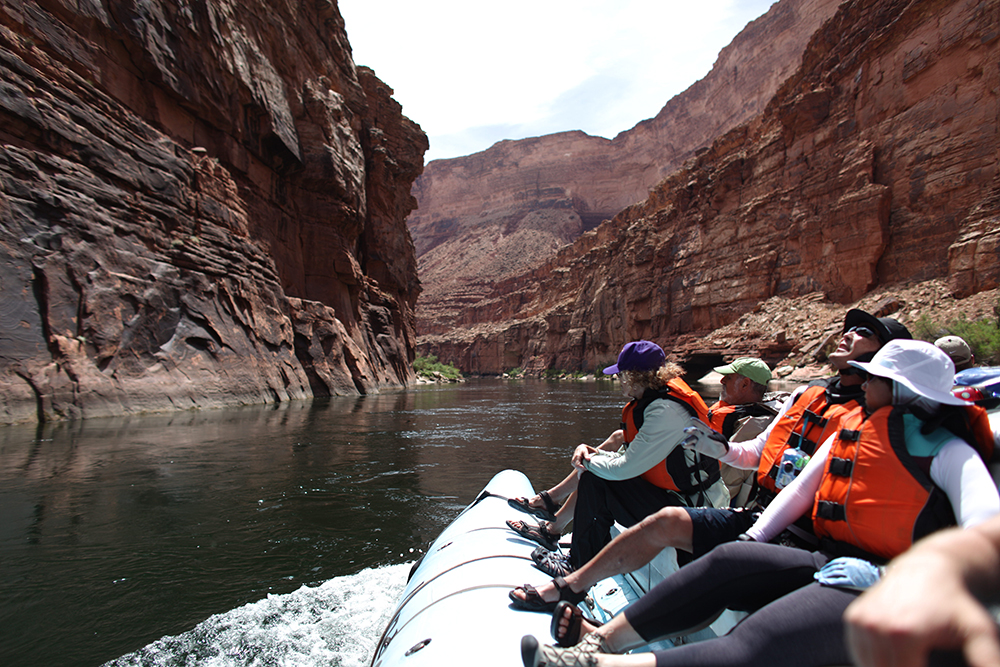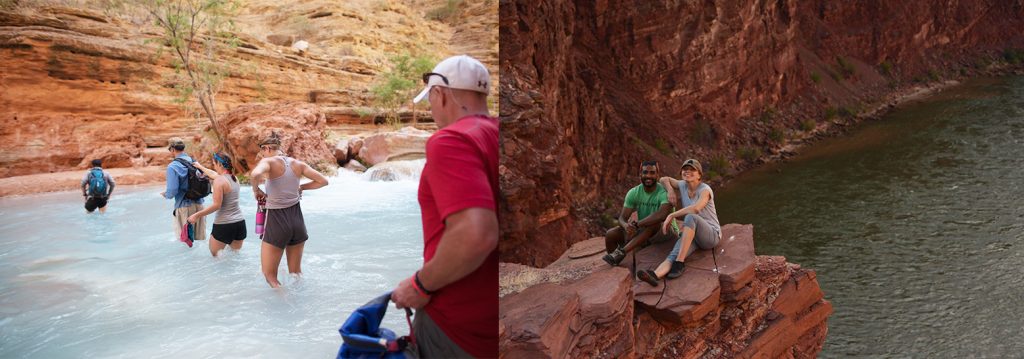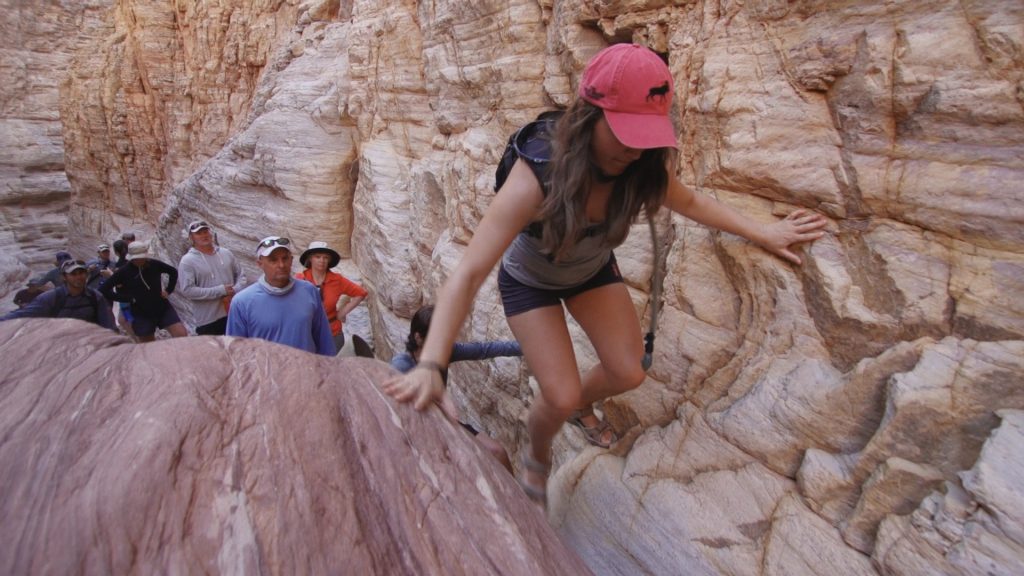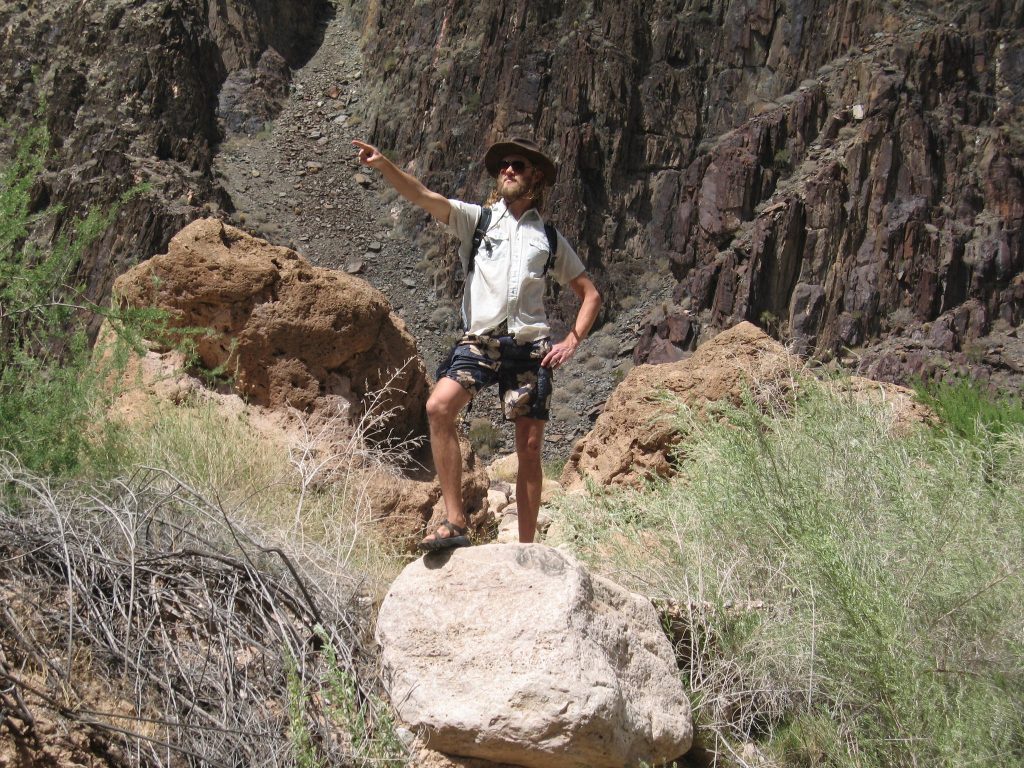You will spend hours each day in your shoes, so footwear is one of the most important things you will be bringing on your trip. Chaco, Bedrock, Teva, Keen, and Merrell all have great options for a river trip. We know deciding exactly what shoes to bring can be stressful – so many choices! What works best is ultimately going to come down to personal preference. However, we have found that aqua socks are not a good option as they don’t provide enough protection or support. On the other hand, most guests find hiking boots to be too excessive.
The ideal river trip footwear falls somewhere in between and should have these key features:
- – Good tread to help navigate slippery surfaces both on and off the rafts
- – Arch support for comfort and to reduce the chance of foot pain
- – Be broken-in BEFORE your trip to lessen the chance of blisters
- – Bonus points if they are quick drying and easy to get sand/pebbles out of

Check out the pros and cons for each choice:
River Sandals
These tend to be the most popular choice as they have all of the features listed above and are great for the numerous side hikes on unmaintained backcountry trails which may be through water.
Pros: They are durable, dry quickly, and can be worn most of the day. Bonus points for less odor and being easier to clean than shoes.
Cons: These sandals are designed to fit your foot over time. If you do not break them in before your trip or wear socks, they may rub your feet raw or give you blisters. Small rocks can get stuck in your sandal when hiking. No sun protection for your feet.
Tips: Some people opt for a covered toe box so they do not stub a toe on rocks. You may want to consider sandals without a toe loop so you can wear socks with them to reduce the chance of blisters and protect your feet from the sun.
Amphibious Shoes
Pros: These provide traction in both wet and dry conditions and more toe protection than an open sandal. They also protect the tops of your feet from the sun while on the raft. Most have mesh uppers, allowing water to drain out easily and making rocks in your shoe less likely. These shoes are easy to wear with socks which makes them another good choice for on and off river adventures.
Cons: May dry slower than sandals. If sand gets in your shoe you may have to take your shoe off to get it out.
Tip: Make sure you are purchasing shoes with solid soles and tread.

Athletic/Tennis or Hiking Shoes
Pros: These are a comfortable choice for the occasional longer hike without water crossings. They tend to have a shorter break-in period and the chances are you already have a pair. If you do bring an older pair, be sure they still have decent tread.
Cons: Your feet will stay wet longer. May not have as much traction as river sandals or amphibious hiking shoes.
Tip: A pair of these are strongly recommended for our hiker’s special trips and required for any trip that has a hike in or out of the canyon.
Camp Shoes
If you have some extra room in your bag you may want to throw in a pair of lightweight, comfortable shoes to wear at camp, such as flip-flops or Crocs. These feel great after spending all day in river shoes.
Tip: Do not go barefoot at camp; footwear is needed to reduce injuries from stepping on a stick, sharp rock, or cactus buried in the sand.
Socks
Trust us – you want to bring some socks. They protect your feet from sunburn, prevent them from getting rubbed raw by the straps on your river sandals, and if you start to get dry and cracked feet put a thick layer of lotion on and cover with socks at night. If you are prone to cold feet or going on an early/later season trip (April/May or September/October), wool/ wool-blend or neoprene socks will help keep your feet warmer in the chilly water. During mid-summer, lightweight wool or synthetic socks may be a better choice.
Tip: Cotton socks are not a good option on the river as they take a long time to dry and may lead to blisters.
Waterproof Community Shoe Bag
Some people prefer to change into socks and shoes for longer dry hikes. You’ll place your extra pair of shoes with socks inside into our provided community dry bag at orientation. This bag will always be accessible and brought out before side hikes. Do not leave hiking shoes in your personal duffel bag since you can’t access that during the day.
Additional footwear tips:
- – If you are on one of our trips that is 6 days or more, we recommend bringing bring 1 pair of river sandals/shoes, 1 pair of hiking or tennis/athletic shoes, 1 pair of flip-flops to wear in camp, and several pairs of socks. Hiking shoes are handy to switch into for longer, dry hikes and to have as a backup option.
- – If you are on a 3-day trip, closed-toed shoes are not required for any activity at the Bar 10 Ranch. However, some guests prefer to bring them for walking on the uneven terrain and activities such as horseback riding and the optional ATV tour. If you prefer to pack light, 1 pair of river shoes/sandals and 1 pair of flip-flops would be sufficient.
- – Finally, make sure you test out your shoes/sandals and gauge your mobility. Most of our guests find themselves being challenged physically at some point during their trip. Knowing your own abilities and limitations are a big part of hiking around the Grand Canyon.
If you still have questions, give our office a call. We are happy to help!


